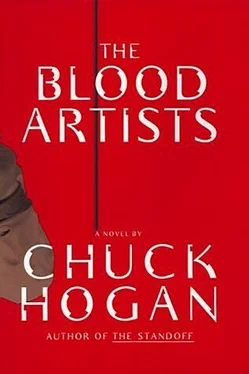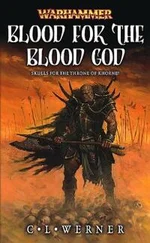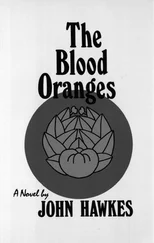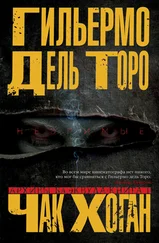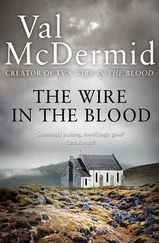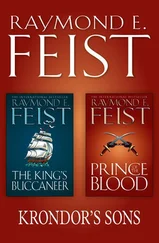She reached me first and grabbed my rubber arm, bursting out something in a Bantu dialect that I did not understand and pulling at me to follow her. I loosed her fingers from my sleeve and for a moment held fast on to her wrist, examining her face. There were no sores and her eyes were bloodshot from crying but otherwise clear. I nodded to the woman and started away, but by then she had seen Kaunda. She shouted at him and spat with precision at his feet, and then at the wrinkled sheet of the shivering girl.
I followed inside my bulky suit. The woman clasped her hands as she moved, raising a doubled fist to the dusky carmine sky, leading me past the hanging straw mat and around an old-fashioned, pedal-driven Singer sewing machine set on a table and a ring of stones that was a cooking fireplace, to a hut on the left. She prayed to me to go inside. Sweat ran down my brow into my eyes, which I could not reach to wipe away. I set down the aid kit and motioned to her to be calm, then ducked inside, under neatly trimmed reeds.
A human figure lay still on a small cot mattress. It was a man weighing no more than eighty pounds. His limbs were wasted down to the skeletal architecture of his body, such that each knobby articulation — the ball of the humerus within the scapular cavity of the shoulder, the carpal bones like loose rocks within the fleshy pouch of his wrist — was plainly described. His skin itself was rotting off his body in a fetid stink, marble-sized boils and violet tumorous ulcerations marking the dark map of his flesh. It was less than flesh, a fungus that had grown up over a skeleton. He respired in slow, shallow breaths.
Worst of all was the man’s face. His lips were curled back from cracked teeth and dissolving gums in a mummy like sneer, and wrinkled folds of unbound skin were gathered in darkly layered sags beneath his drooping ears. Most expressively, his eyes had found something horrible in the ceiling. They were distended, blood red and fully exposed from their widened orbits, the pupils dilated and floating like compass heads fixed in scarlet spheres — as of a pair of eyeballs plucked from a jar of bloody preserve.
I backed out of the hut. I stood staring at the open black doorway I had retreated through and heard the woman pleading or praying behind me, and I backed away some more. I pointed Peter inside. “Soyez calme,” I said to the woman automatically, Be calm, not hearing the words myself until well after they had been spoken.
A figure moved in front of me. It was the man who had been squatting under the mat. He said something in a dialect I did not understand, though it was clearly gibberish. His eyes were sad and scarlet beneath drooping lids, half-open, half-dead, drunk with blood. He made a reaching motion behind him which at first I did not comprehend, and the woman screamed anew.
He produced nothing, and stared at his empty hand in confusion. Peter stood behind him, holding a large unsheathed machete he had pulled from the back of the man’s pants. There was blood encrusted on the flat of the blade. The man let out a cry of despair and fell weeping to the ground.
Peter and I looked at each other through our masks. We looked at the machete.
“Christ,” I said finally.
Peter flung it deep into the trees. He said, “Come on.”
We left the woman. We looked in at each of the more than twenty huts set along the curling pathway. Camp conditions were such that each small dwelling housed as many as six workers, and each hut now contained at least one bedridden infected person, though many contained more. Kaunda rejoined us and led the way to a hastily cleared burial ground in the back trees. At his insistence, the camp workers had dispensed with the traditional washing of corpses. An animal bone yard was similarly arranged nearby.
Kaunda explained that the disease had a peculiar and dramatic effect upon the brain; a few of the infected camp workers had set upon the others with knives, hammers, whatever was handy. The man with the machete was a sorcier aux crabes, the camp sorcerer who divined fortunes and, once the deaths had begun in earnest, dispensed buti tokens to ward off the fever. Kaunda departed the camp once the sorcerer became ill, in fear of his life.
We crossed a sturdy vine-and-grass bridge hanging over a swift river to a second grouping of smaller huts beyond. The huts were lined around a wide quadrangle of clay-tinged dirt where the afflicted were laid out on woven mats at odd angles, staring with uninterested eyes. Other obviously ill people knelt in grief at the side of loved ones, and still others shuffled about the square in a fevered funk. The recent dead were laid out in rows, their faces fixed in grimace, limbs and torsos emaciated, eyes bloated.
Raindrops bled through the high, dense canopy as Kaunda led us back toward the bridge. He paused near the quiet river, hooking his hand on a low, curved tree branch and blotting his forehead with a handkerchief from his back pocket. “Four days, start to finish,” he said in French. “First the headache. Flulike symptoms, a general malaise. Then spasms, chills, and onward.” He rumbled a light cough into the dirty handkerchief. He was facing the river. “Four to five days, fever to fulmination. Three weeks now. It set upon the camp like an eclipse.”
Peter went around in front of Kaunda. Under his scrutiny, the wizened doctor straightened off the low branch. He swiped at his face with the cloth, standing on short, uncertain legs, but ultimately wilted under Peter’s intent, silvery gaze.
“You’re sick,” Peter said.
Kaunda gestured dismissively with the damp cloth. “Malaria,” he said. “It returns now and then—”
Peter shook his head. “You’re sick,” he said again.
Kaunda looked wearily back at me, a pleading smile, and then again at Peter, appealingly. “A touch of the fever,” he explained. “I have quinine in my office.”
He tried to move toward the bridge but Peter stood in his way. “Sick doctors,” he said.
Kaunda shook his head. “Non, Monsieur—”
Peter regarded Kaunda with disgust. “Denying their own disease as they spread it.”
“Monsieur.” He was indignant now, rubbing at his face with the cloth as though trying to erase it, his balance wavering, “I can assure you—”
Peter turned his back on the man and faced me. “We’re on our own here,” he said.
For a long time after that I forgot about the heat inside my suit. We unpacked the equipment and immediately began treating people. The metal-roofed marketplace shanty was the only structure large enough to accommodate all of the sick. I drafted the healthier camp survivors — falteringly, in glove-pantomimed French — to help me clear out baskets of grains and meal and burlap bags of spoiled produce, to make room for a trauma center. Peter isolated the area by dividing the camp lengthwise along the center mall, symptornatics to the right, asymptomatics to the left. A dotted row of stones became the borderline between sickness and health. They were all term laborers trucked in from the depressed cities of Kinshasa, Brazzaville, and Yaoundé, recruited by agents of the same illicit concern that had hired Kaunda, lured by high wages too attractive to refuse. Of the roughly one hundred and fifty surviving workers, the two populations at that time were nearly balanced.
After a round of preliminary examinations Peter set up his tablet and bulletined two nurses and seven investigators from the Special Pathogens Section, a division of the CDC that dealt specifically with the epidemiology and etiology of unknown emerging viruses. The aid message read, in part:
Febrile disease characterized by flulike symptoms, delirious sleep, lethargy escalating to dementia, arthritic symptoms, wasting syndrome, endothelioma. Clinical disease includes (prelim): Fever nearing 40 % epitaxis, weight loss, muscle pain, prostration, allergylike shock, rapid evolution toward death. Agent (prelim): Viral, emerging. Pathogenicity: High.
Читать дальше
